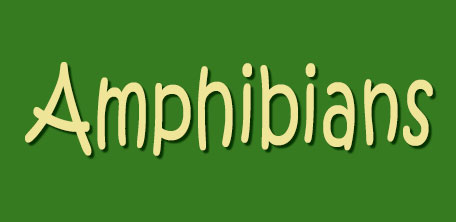
The word ‘amphibian’ in itself gives us a lot of insight on the members of this category. It is derived from the Greek word ‘amphibios’ meaning living a dual life. Amphibians are vertebrates that can survive on both land and water. The common examples of this class include caecilians, frogs, toads and salamanders. Let’s get a closer look at these unique animals.
Following are the characteristics of Amphibians:
- Cold-Blooded
- They can live on both land and water
- They are carnivores
- Give birth to young in eggs
- Have moist skin that contain mucus and poison glands
Like reptiles and birds amphibians are also cold-blooded or ectothermic animals. This means they rely on the surrounding environment to maintain their body temperature, unlike mammals which regulate their body temperature internally. These species are active in warm temperatures and get sluggish when it’s cold.
Amphibians begin life underwater and breathe through gills. They gradually move to land on the onset of their adulthood, develop lungs and are the only vertebrates that go through a complete metamorphosis. For example; some species of frogs give birth to tadpoles with gills that live underwater till adulthood. However there are other species of frogs that are born looking like miniature versions of their parents equipped with the ability to survive on land, while some species retain their gills for the rest of their lives.
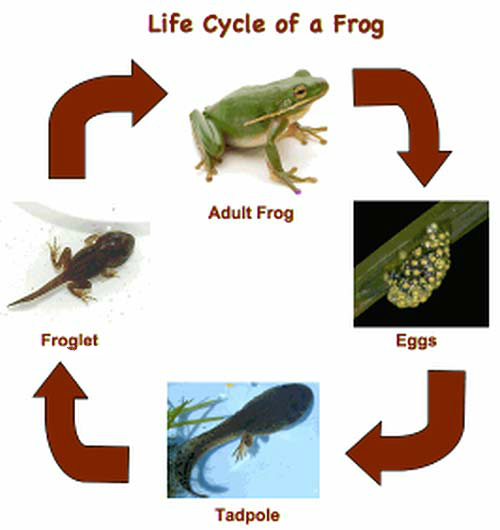
Amphibians prefer the wet and damp areas and can be found thriving around wetlands, shallow ponds and marshes. However they can even adapt to a wide range of habitats including man-made ones.
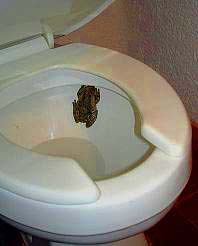
Amphibians are carnivores both on water and land. In water they consume a wide variety of fish, crustaceans, small reptiles and other amphibians. And their menu on land includes insects like flies and spiders as well as worms.
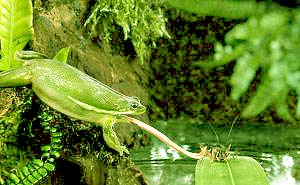
Most amphibians lay their eggs in freshwater however there are some species that breed in moist environments like burrows and leaf litter. The eggs are covered in a clear, jellylike substance that protects them from dehydration and are fertilized externally. Most amphibians undergo metamorphosis frequently accompanied by abrupt change in habitat and behaviour. They transform from aquatic larvae to a terrestrial form at maturity.
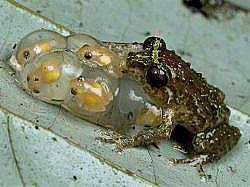
Amphibians do not have scales (in most cases), feathers or hair as in the case of fish, birds and mammals. Their skin is smooth, thin and porous i.e. it allows for molecules and gases to pass through and contains both mucus glands and poison glands. Some species use their moist skins to breathe as well as absorb water.
Amphibians are classified into 3 orders
-
Order Anura (Salientia) is coined from the Latin words “an” meaning “without” and the Greek word “oura” meaning “tail”. This order includes Frogs and Toads. Approximately 4500 species come under this category, making Anura the largest order of the three. They differ from the other two in that they are four legged where the hind legs are longer allowing them to climb and leap. They employ external fertilization. These species are vocal and can makes sounds ranging from squeaks to barks.
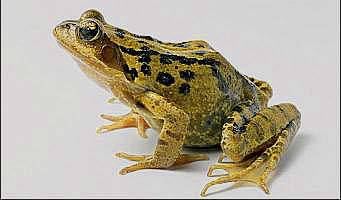
Frog -
Order Caudata (Urodela) coined from the Latin word “cauda” meaning “tail” and covers Salamanders, Newts, Waterdogs, Mudpuppies, Sirens and Amphiuma. This order is comprised of about 500 species of amphibians. The name itself tells you how these amphibians are different from the previous. Well, for a start these guys have tails! Approximately equal to the length of the body and sometimes longer which help them swim well. Their limbs are of equal length used for walking and unlike the anurans aren’t able to jump and climb. They show variation in size and the members of this order are not able to vocalize. An exception to these criteria is the Dicamptodon which can squeak when provoked.
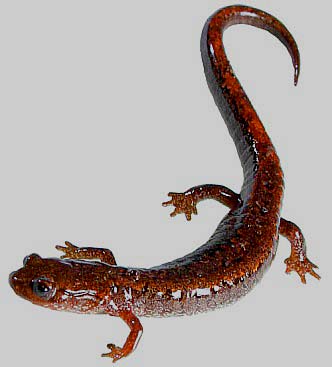
Salamander -
Order Gymnophiona (Apoda) is derived from the Greek word “gymnos” meaning “naked” and “ophis” meaning “serpent” comprises all Caecilians. Approximately 50 known species of Caecilians come under the order Gymnophiona. They are characterised by long, worm-like segmented bodies and resemble eels or earthworms. They have reduced tails and lack any kind of appendages. They are the only amphibians to possess dermal scales and have almost functionless eyes. Their powerful heads and hardened skulls enable them to burrow deep into the ground surface, one of the reasons they are hardly ever seen and research on them is diminutive.
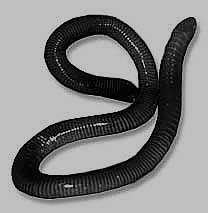
Caecilian
Surviving in an amphibian’s skin is not a cake walk. They make enemies both on land and water owing to the fact that they spend the first part of their life in water and the latter part on land. They are hunted in all their forms from egg to adult by fish, mammals, wading birds, and reptiles like the snake, aquatic invertebrates like leeches and even by their own kind when food is scarce. So why do all other species pick on the amphibians? Well a few of the reasons are that they have soft, thin skin, they are numerous – larvae and tadpoles are often concentrated and most of them are small to medium size. So what then, does a mother amphibian do to protect her young? She picks a safe spot to lay her eggs which she clusters together and guards, even stringing them along as they’re laid if they have to. Embryos even sense the presence of a predator and can alter the hatching time. The only defence available to the larva is that of hiding or running for cover. They even refrain from schooling together. Some of them handle the stress of being hunted down by developing longer wider tails to increase manoeuvrability. Some adult amphibians stay still and use their cryptic coloration or structure or both to blend in with the surrounding and avoid detection by the predator and others scamper away as quick as they can.
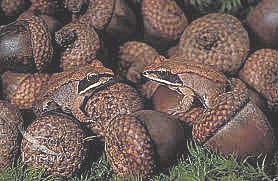
Don’t they just look like a pair of nuts?
Being cornered brings out the best in an amphibian – some will inflate themselves to intimidate their pursuer, or even play dead.
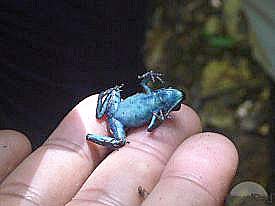
They present colourful parts of their bodies which in the animal world means “I’m not very tasty. I might just kill you.” Some actually mean what they display, secreting poisonous toxins through glands on their skin. And if that doesn’t work either, they’ll move in for the attack. Salamander will swish their tails while keeping their bodies motionless. This diverts attention from their bodies and these tails also contain poison from the glands in the dorsum. Some of them even give head butts and if captured they will even sink their teeth into their captor. They use every trick in the book, from vocalization to startle their predator, to scent that makes them seem unappetizing; right down to combating with a claw like a third toe as in the case of the African frogs – Ptychadena.
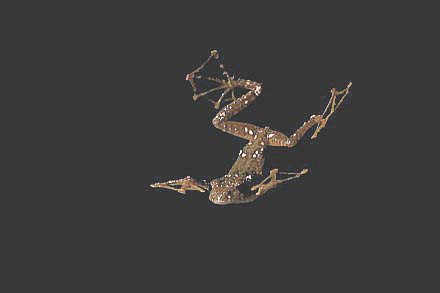
Webbed feet, used to fly... above the treetops so high!
Wallace’s Flying Frog got its name from the British naturalist Alfred Russel Wallace in 1869, who was the first to explain the species. This frog apart from hopping and swimming can also fly. Also known as the “parachute frogs” these amphibians splay their four webbed feet as they leap from branch to branch when threatened. They possess membranes between their toes and loose skin flaps on their sides that catch the air as they fall and helping them glide nearly 50 ft above the ground to a nearby branch or all the way down to land. Their oversized toe pads facilitate a soft landing and even help them stick to tree trunks. His flying genius can be found on the tree tops of the dense tropical jungles of Malaysia and Borneo and descend only to mate or lay eggs. Their staple food is mainly insects.
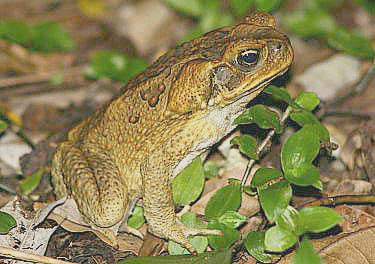
His name rhyme’s with Bane Bode
Say hello to the Cane Toad. This American native was brought to Queensland, Australia in the 1930’s on a mission we like to call Beetle Belittle (note: this is purely our own invention), with an aim to diminish the destructive beetle population. But this little malignant venomous toad had its own wicked scheme in mind and sought only to reproduce and spread themselves across the country, poisoning native species that tried eating them and consequently depleted in number. Same went for the fauna that was preyed on by these toads. And they didn’t stop there, their activities also led to the poisoning of pets and humans alike and also reduced prey populations for native insectivores, such as skinks. With few natural predators (within Australia) to control their expansion these toads plundered pet food from feeding bowls left outside of unsuspecting homes. They started off as a crew of 3000 cadets but their numbers are now well into millions and are expanding to the north-eastern Australia. Cane toads are large, stocky amphibians with dry, warty skin, and are mostly found in southern United States, Central America, and tropical South America where their populations are kept in check by the natural predators around.
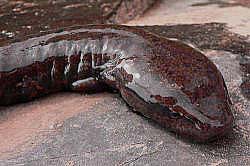
It’s a dog, no it’s a puppy!
Actually it’s a Mudpuppy. And we don’t mean a puppy that loves frolicking in the mud. Mudpuppies, also known as waterdogs, are salamanders that get their name from the squeaky sounds they make - relatively like a dog’s bark. They are one of only a few salamanders that can vocalize and among the largest (they can exceed 16 inches in length) with the average length being 11 inches. Mudpuppies are spared by fishermen who harbor the delusion that these slimy amphibians are poisonous. They are characterised by their bushy, red external gills that they grow as larva and keep all through their lifetime. They have gray or brownish-gray bodies with blue-black spots, flat heads and wide tails accompanied by stubby legs and feet with four distinct toes. They are found at the bottom of rivers, streams, lakes and ponds ranging from east to North Carolina, southern central Canada through the Midwestern United States, and south to Georgia and Mississippi. They hide themselves under rocks, logs and underwater plants and emerge at night, never leaving the water, to feed on anything they can catch, including worms, crayfish and snails. Female mudpuppies guard their large clutch of eggs a trait unique among salamanders.


